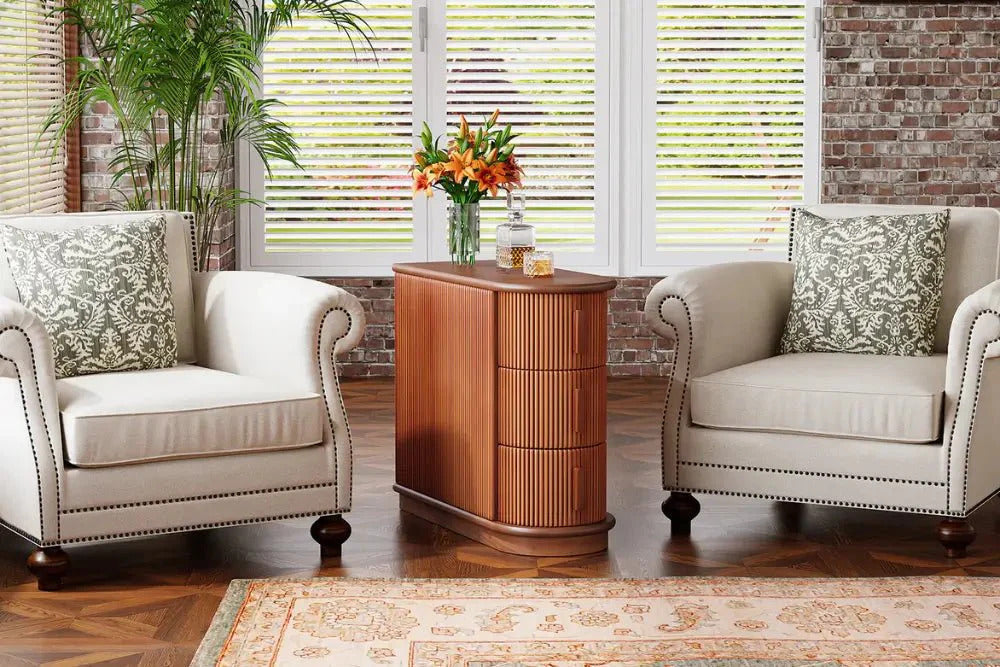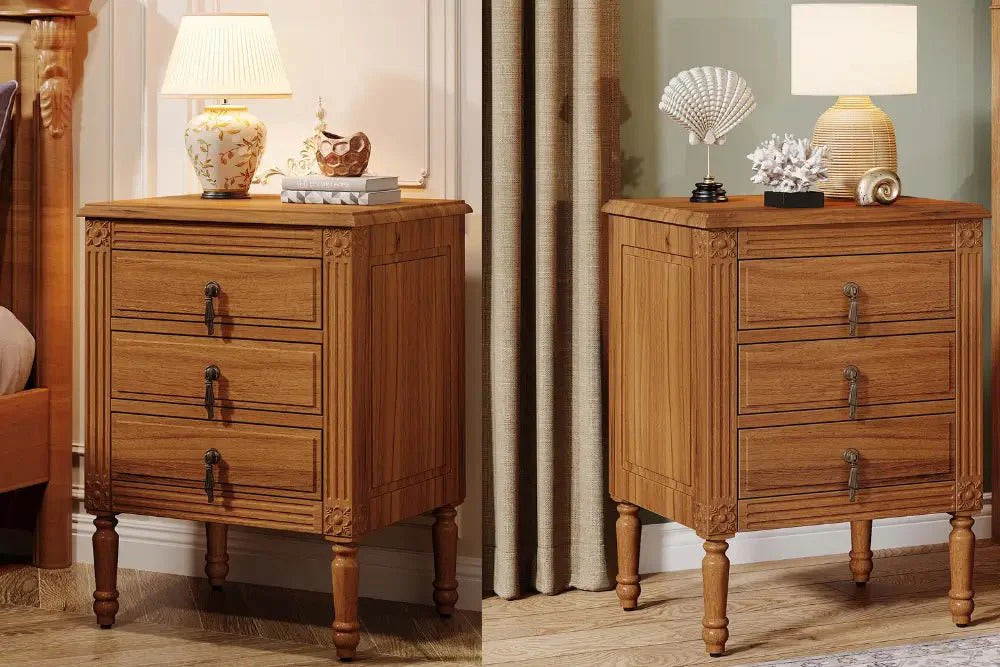Round side tables are increasingly popular in modern living rooms thanks to their versatility and visual appeal. Their smooth, circular shape works well in a variety of spaces, particularly smaller rooms or more compact layouts. With no sharp corners, they’re also a safer choice for homes with children or pets. Additionally, round side tables help soften the look of a room by balancing out angular furniture such as square sofas or coffee tables. Their compact size also makes them easy to reposition whenever your needs or layout change.
To help you feel more confident when purchasing side tables and coffee tables, we’ve outlined the key considerations to keep in mind.
How to Choose a Round End Table for Your Living Room

1. Size and Height
The ideal side table height should be close to the height of your sofa’s armrest. This typically means selecting a table around 45–70 cm tall. A table that’s noticeably higher or lower can feel awkward to use and may disrupt the flow of the room.
A standard round side table usually has a diameter of 45–60 cm, which suits most sofas or occasional chairs. Be sure to measure the available space in your living room so the table doesn’t overpower the room or obstruct movement.
A table that’s too large for the space can feel clunky and unnecessary, while one that’s too small may lack practicality and appear disproportionate next to your furniture. If your living area is on the smaller side, opt for a compact design to help maintain a tidy, balanced layout.
2. Style and Material
Choose a side table that complements the overall style of your living room. For contemporary or minimalist interiors, look for clean lines and materials like metal, glass, or lacquered timber—these offer a sleek, modern feel. If your space leans more traditional or rustic, consider wooden tables with visible grain patterns to add warmth and timeless charm.
For mixed-style interiors, a hybrid design might work best—for example, a wooden tabletop paired with metal legs. This blend of materials creates a layered look that fits seamlessly with a wide range of décor styles.
3. Functionality
A side table should offer more than good looks. Many modern designs include practical features such as drawers or lower shelves. If you plan to store remotes, books, or personal items, choosing a design with storage can help reduce visual clutter. Tables with integrated USB ports or charging points are also handy for those who frequently charge devices such as phones, tablets, or laptops.
Consider how you plan to use the table day-to-day. If it’s mostly for display, a simple design will do. If you expect to use it regularly for storage or as a functional surface, look for something more versatile with built-in features.
How to Decorate a Round Side Table

Styling a side table is a great way to inject personality into your living room. A popular approach is the “rule of three,” which involves arranging three items for a visually balanced look—such as a decorative piece, a small plant, and a practical item like a coaster set or tray.
Layering also works well. Try placing a taller item (like a lamp) at the back, a medium-height piece (such as a stack of books) in the centre, and a small plant or candle at the front. This creates depth without overwhelming the space.
Mixing materials—metal, timber, ceramic—adds texture and visual interest. Because round tables have a simple form, they pair especially well with varied textures.
For inspiration, browse through customer photos. Many people personalise their tables with family pictures, keepsakes, or seasonal décor—perfect as cooler months or autumn styling trends arrive.

Frequently Asked Questions (FAQ)
Are Round Side Tables Suitable for All Types of Sofas?
Yes. Round side tables suit a wide range of sofa styles thanks to their soft edges and compact form. They work especially well in balancing the straight lines of modern or minimalist sofas but also complement traditional or vintage furniture. With large sofas or sectionals, a round table can help break up strong lines and create a more inviting, harmonious feel.
How Should I Pair a Round Side Table with Other Furniture?
Aim for visual contrast. If your sofa has sharp, angular lines, a round side table can soften the look. If your furniture features curved or rounded shapes, balancing it with something more structured—such as a rectangular coffee table—can add definition.
Always consider scale. A large sofa may call for a larger round side table, while a compact armchair or loveseat works better with a smaller piece. Avoid overcrowding the room—ensure there’s enough space to move comfortably between furniture items.
What Is the Price Range for Round Side Tables?
Prices vary depending on materials, design, and brand. Budget-friendly styles made from MDF or basic timber usually range from around AUD $40–$150. Mid-range tables crafted from higher-quality timber or metal typically fall between AUD $150–$400. Premium designer tables made from marble, solid timber, or featuring unique craftsmanship may cost AUD $500 or more.
When choosing, consider both quality and long-term use. A more expensive table may offer better durability, premium materials, or added features that make it a worthwhile investment.



